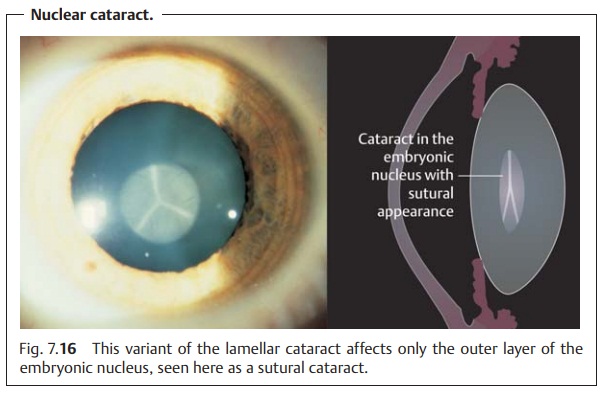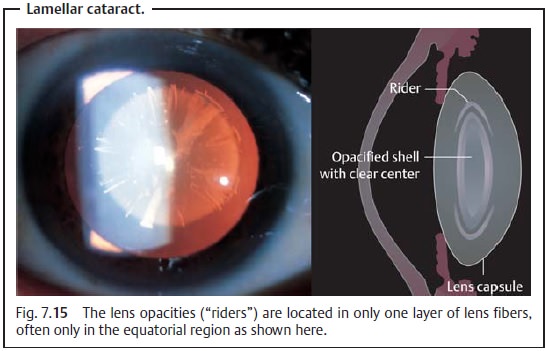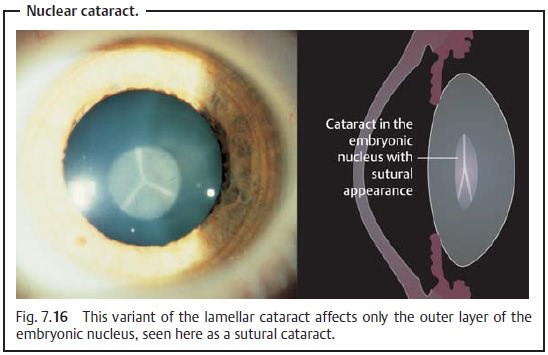Chapter: Ophthalmology: Eye Lens
Congenital Cataract

Congenital Cataract
There are many congenital cataracts. They are either hereditary or acquired through the placenta.
Hereditary Congenital Cataracts
Familial forms of congenital cataracts may be
autosomal dominant, auto-somal recessive, sporadic, or X-linked. They are
easily diagnosed on the basis of their characteristic symmetric morphology.
Forms of hereditary congenital cataract:
Lamellar or zonular cataract.Opacities are located in one layer of lens fibers,often as
“riders” only in the equatorial region (Fig. 7.15).

Nuclear cataract.This is a variant of the lamellar cataract in which
initiallyonly the outer layer of the embryonic nucleus is affected (Fig. 7.16).

Coronary cataract.This is characterized by fine radial opacities in the
equa-torial region.
Cerulean cataract.This is characterized by fine round or club-shaped
blueperipheral lens opacities.
Most familial lens opacities do not impair
vision and are not progressive.
This also applies to rare lens opacities
involving the capsule such as anterior and posterior polar cataracts, anterior
pyramidal cataract, and Mittendorf’s dot (remnant of the embryonic hyaloid
artery on the posterior capsule of the lens;).
Cataract from Transplacental Infection in the First Trimester of Pregnancy
A statistical study by Pau (1986) cites the
following incidences of congenital cataract with respect to systemic disease
contracted by the mother during the first trimester of pregnancy:
❖ Rubella 40 – 60%.
❖ Mumps 10 – 22%.
❖ Hepatitis 16%.
❖ Toxoplasmosis 5%.
Most of these cases involved total cataracts due to virus infection
contracted by the mother during early pregnancy. This infection occurred during
the fifth to eighth week of pregnancy, the phase in which the lens develops.
Because the protective lens capsule has not yet been formed at this time,
viruses can invade and opacify the lens tissue.
The most frequent cause of cataract is a
rubella infection contracted by the mother, which also produces other
developmental anomalies (Gregg’s syn-drome involving lens opacity, an open
ductus arteriosus, and sensorineural hearing loss). The cataract is bilateral
and total and may be diagnosed by the presence of leukocoria (white pupil) and
chorioretinal scarring secondary to choroiditis.
Related Topics